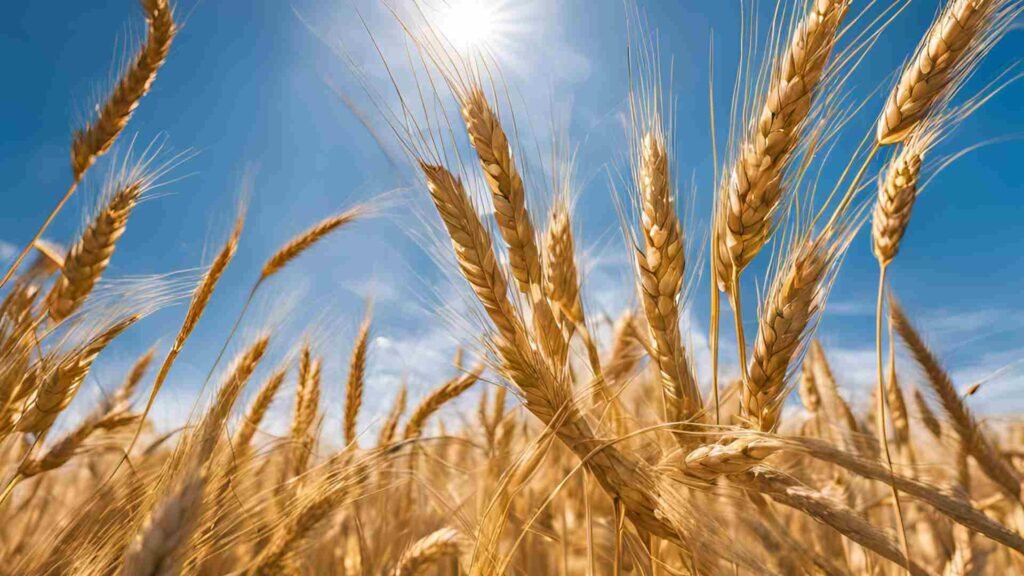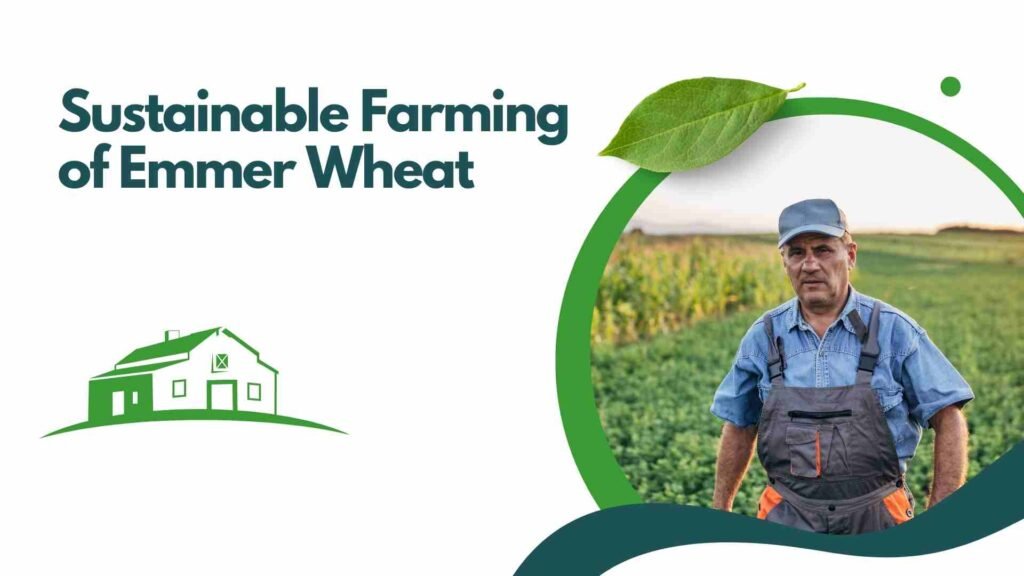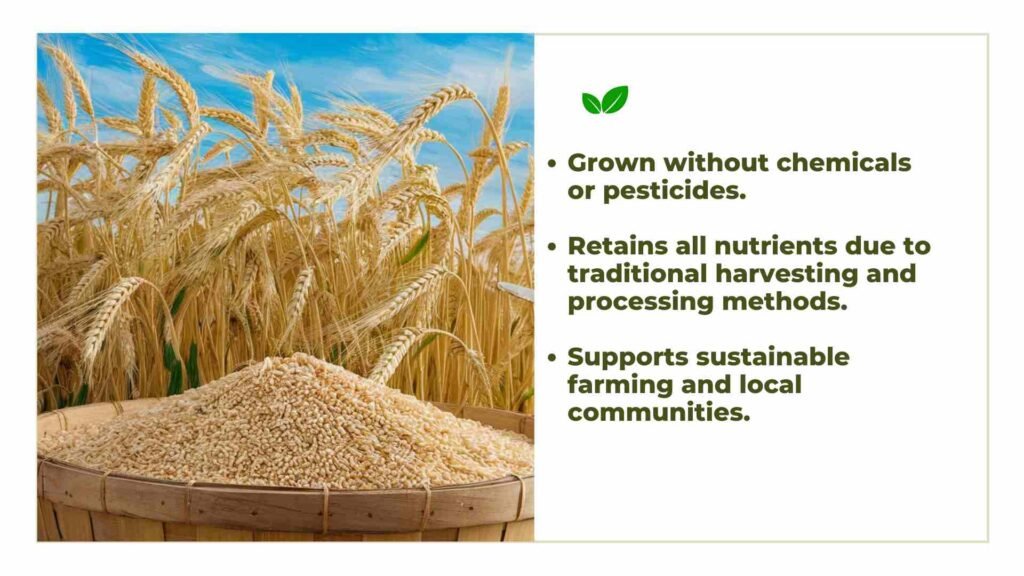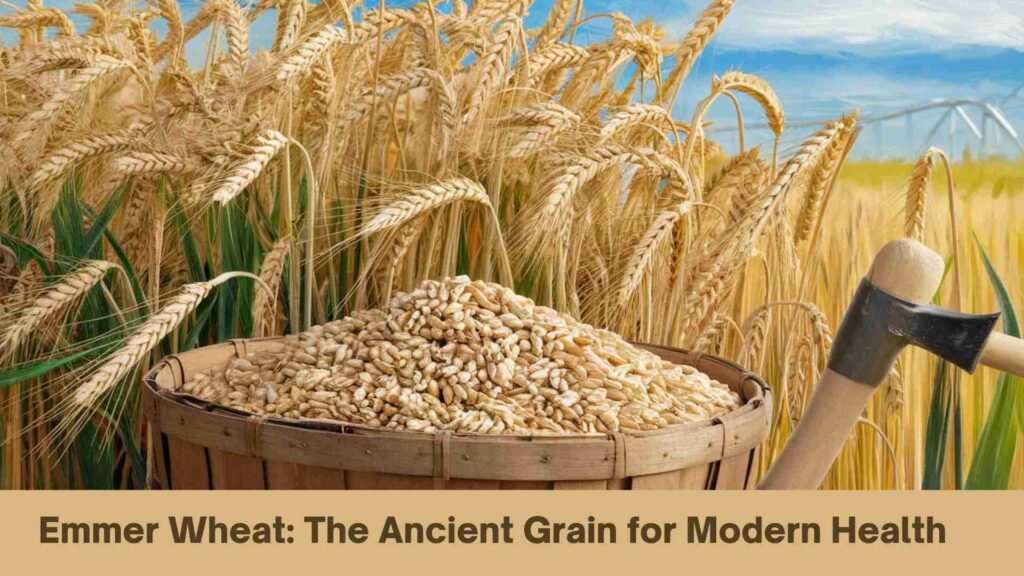Emmer wheat, also known as Khapli wheat or Farro, is an ancient grain gaining popularity as a healthier alternative to regular wheat.
With its rich nutritional profile and versatile uses, this grain has been cultivated for centuries and offers numerous benefits for health-conscious individuals.
What is Emmer Wheat?

Emmer wheat is a type of ancient wheat that dates back to the Neolithic Age. Originating in the Middle East, it has since spread to various parts of the world, including Europe, Africa, and Asia.
Known for its low gluten content and high nutritional value, it has become a staple in many health-focused diets.
Nutritional Benefits of Emmer Wheat
Rich in Protein and Fiber: Emmer-wheat contains more protein and dietary fiber than regular wheat, making it a great choice for vegetarians and weight watchers.
Packed with Essential Nutrients: It is a good source of magnesium, zinc, iron, and B vitamins, which support overall health.
Low Gluten Content: Due to its low gluten levels, it is easier to digest and suitable for individuals looking to reduce gluten intake.
Low Glycemic Index: Its low glycemic index makes it a healthy option for diabetics.
Weight Management: The high fiber content keeps you feeling full for longer, curbing unnecessary snacking.
Culinary Uses of Emmer Wheat
Emmer-wheat is highly versatile and can be incorporated into various dishes. It can be used to make bread, chapatis, porridge, pilafs, and even salads.
Popular in Italian and Armenian cuisines, it is often used in soups and is a healthier substitute for rice in many recipes.
Sustainable Farming of Emmer Wheat

One of the standout features of Emmer-wheat is its exceptional sustainability. This resilient crop thrives in poor soil conditions where other crops might struggle, making it an ideal choice for regions with limited agricultural resources.
Additionally, Emmer-wheat requires significantly less water compared to modern wheat varieties, which is particularly beneficial in drought-prone areas and regions facing water scarcity.
Farmers cultivating Emmer-wheat often rely on traditional farming methods that align with nature’s rhythms. They avoid the use of chemical fertilizers, pesticides, and synthetic additives, ensuring that the crop remains natural and organic.
Instead, they use eco-friendly techniques such as composting, crop rotation, and natural pest control solutions like cow dung, plant-based sprays, and bio-fertilizers like Jeevamrut.
These sustainable practices not only protect the environment but also help preserve the nutrient density and quality of the grain, offering a healthier, chemical-free option for consumers.
By choosing Emmer-wheat, you support environmentally conscious farming and promote a greener, healthier future for generations to come.
Emmer Wheat in India
In India, Emmer-wheat, or Khapli, is grown in limited regions such as Karnataka, Maharashtra, Gujarat, Andhra Pradesh, and Tamil Nadu.
Its historical roots can be traced to archaeological findings in Haryana, Kashmir, and Punjab. With increasing awareness of its health benefits, it is now available in specialty stores and online markets.
Why Choose Organic Emmer-Wheat?

Organic Emmer-wheat offers added benefits:
- Grown without chemicals or pesticides.
- Retains all nutrients due to traditional harvesting and processing methods.
- Supports sustainable farming and local communities.
Conclusion
Emmer wheat is a nutritious, sustainable, and versatile grain that is making its way back into modern diets. Whether you are looking for a healthier alternative to regular wheat, managing a specific health condition, or supporting sustainable farming practices, Emmer-wheat is an excellent choice.
From ancient recipes to contemporary dishes, this grain offers something for everyone.Explore Emmer-wheat today and experience its numerous benefits for yourself.
Looking for more great reads? Check out our homepage maxxfour.in for trending articles and insightful blog posts on various topics.
FAQs
What is the difference between Emmer wheat and regular wheat?
Emmer-wheat has lower gluten content, higher nutritional value, and is easier to digest compared to regular wheat.
Is Emmer wheat suitable for gluten-sensitive individuals?
While Emmer-wheat has lower gluten content, it is not completely gluten-free and should be avoided by those with gluten intolerance or celiac disease.
Where can I buy Emmer wheat?
You can find Emmer-wheat in organic stores, specialty shops, and online marketplaces.
How can Emmer wheat be used in cooking?
It can be used to make bread, chapatis, porridges, salads, soups, and even as a substitute for rice in many dishes.
Is Emmer wheat good for diabetics?
Yes, its low glycemic index and high fiber content make it a healthy choice for individuals managing diabetes.
Does Emmer wheat support weight loss?
Yes, its high fiber content keeps you full for longer, reducing the need for frequent snacking.
Is Emmer wheat sustainable for farming?
Yes, Emmer-wheat is a resilient crop that can grow in poor soil and requires less water, making it environmentally friendly.
What nutrients does Emmer wheat provide?
It is rich in protein, fiber, magnesium, zinc, iron, and B vitamins, supporting overall health.
Can we make clothes from Emmer wheat straw?
Yes, Emmer-wheat straw can be used to make clothes. The fibers are extracted, spun into yarn, and woven into fabric, offering an eco-friendly alternative to traditional materials.







